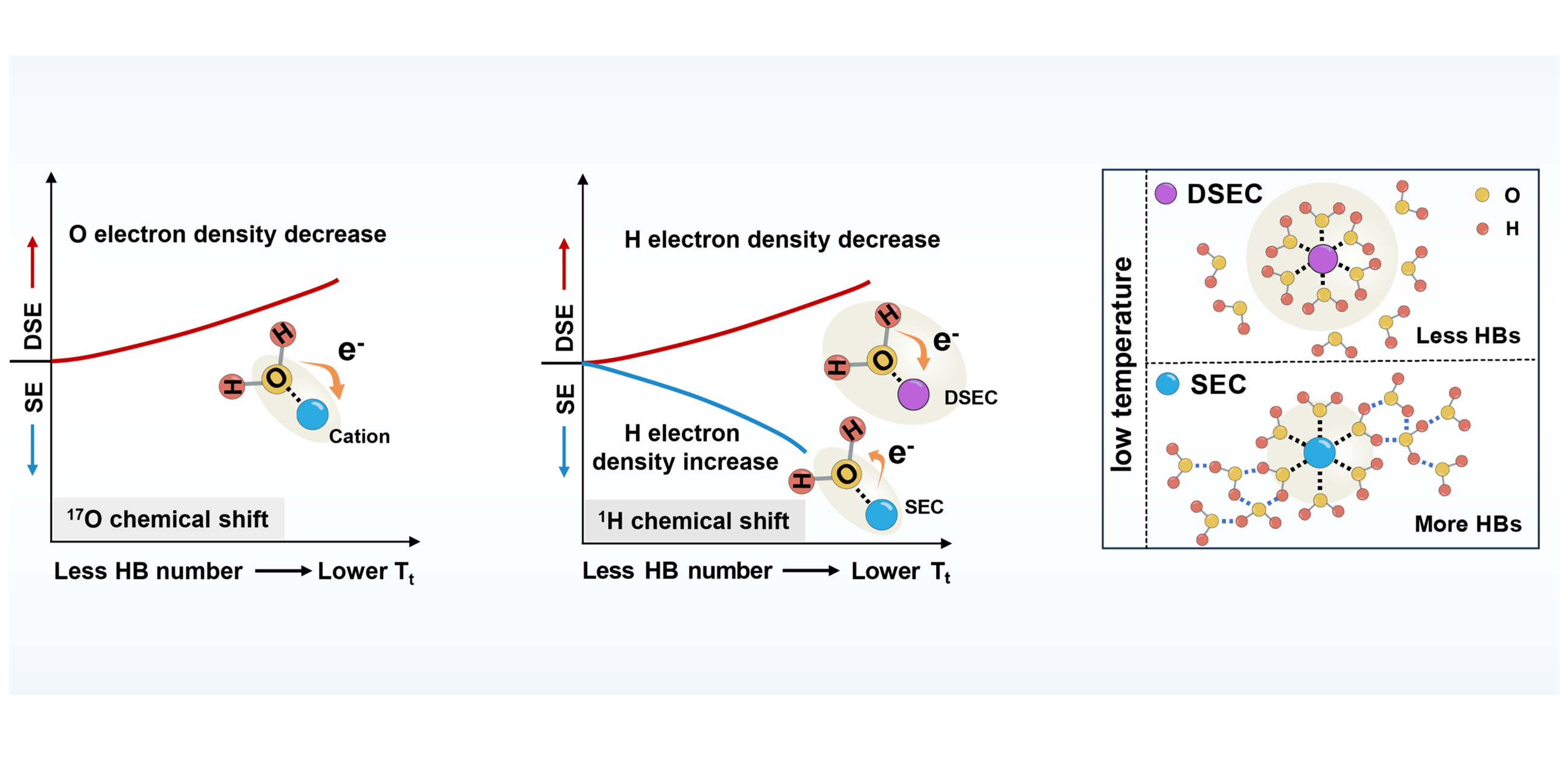Leveraging cation effect for low temperature aqueous Zn-based batteries
Citation
Doudou Feng#, Yanchun Xie#, Yucong Jiao*, and Peiyi Wu*. Leveraging cation effect for low temperature aqueous Zn-based batteries. Nat. Commun. 2025, 16, 9254.
Abstract
Anion‒water interactions in aqueous electrolytes can lower the freezing point for antifreezing applications, yet cation‒water interactions have usually been ignored. Here, we propose that the cation effect of Al3+ can simultaneously exert a deshielding effect on both H and O in water, which significantly weakens the water hydrogen bond and lowers the freezing point to −117 oC at a low salt concentration of 2.8 m. Additionally, dual-cation effects further optimize the ion diffusion kinetics and facilitate the formation of an Al‒Zn alloy layer for Zn electrode safeguarding. As demonstrated in batteries, the designed electrolyte enables the symmetrical Zn||Zn coin cell for 10,340 h of Zn plating/stripping and Zn||polyaniline pouch cell with a capacity retention of 100% after 500 cycles at 100 mA g-1 and −70 oC. Even at −80 oC, the Zn||polyaniline cell delivers a discharge capacity of 115.5 mA h g-1. The cation effect offers an effective strategy for regulating the water structure of low-temperature aqueous devices.


